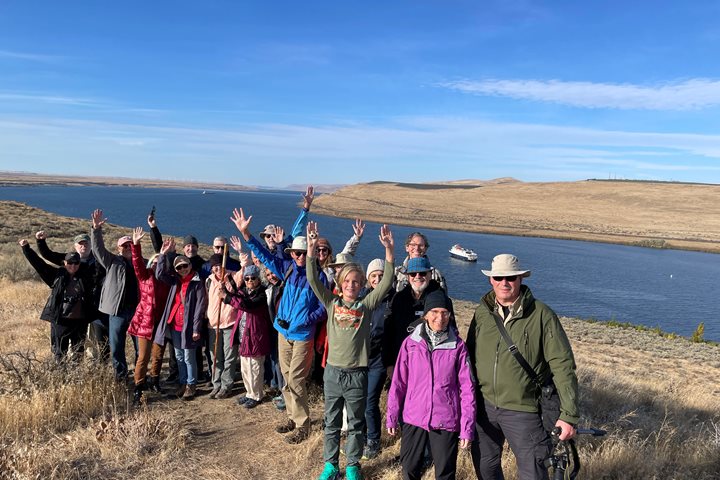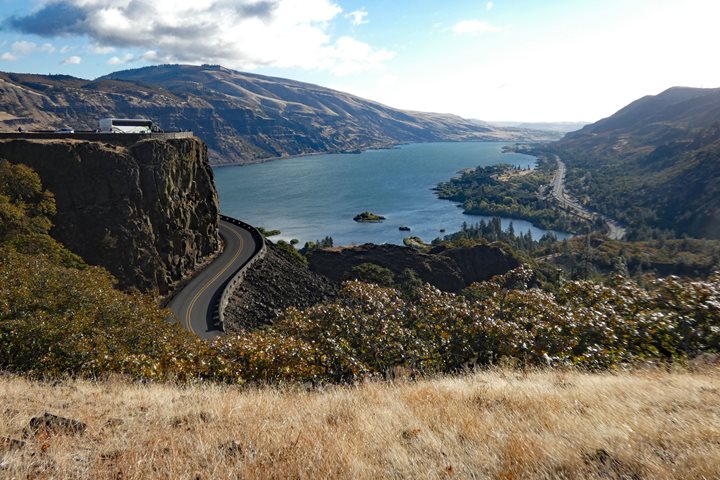Following an adventurous and exciting day of hiking, bird- and fish-watching, and reminiscing among old cars and airplanes, guests aboard National Geographic Sea Lion are offered the opportunity to sleep in this morning––an overture widely appreciated and largely taken advantage of.
With so many still slumbering, the lounge is quiet as we creep into the dawn on Lake Umatilla while outside our windows, on the south bank of the Columbia, the rising sun lights giant white turbines whirling silently, gracefully on fresh cold winds atop the rolling landscape. Down below, along either bank of the river, the clangor of coal trains carrying ancient carbon seems to be shouting, “Don’t forget about me!” as they lumber on.
As I watch this glaring juxtaposition of past and future, polluted and pure, tired and fresh, old and new, from my chilly seat on the bow, I can’t help pondering the once-mighty Columbia River now lost in the lazy lakes backed up by concrete barriers that dilute its currents, warm its waters, stop its salmon, tame its wildness.
Without this radical transformation, our journey up the “river” would not be possible, yet with it, like the once keystone salmon who no longer dominate the landscape, we are deprived of what the wild river once provided its countless residents.
Our afternoon finds us exploring Umatilla National Wildlife Refuge where rafts of American coots blacken the calm water, as hundreds of snow geese erupt from the lake to checker the sky with their black-dipped white wings. On the rocky tip of a small island, a pair of young greater white-fronted geese preen, unconcerned by our rubber rafts of gawking guests. A bald eagle spies us from the bare branch of a cottonwood tree.
All these birds, concentrated in a refuge created to mitigate the flooding of wetlands and sloughs by John Day Dam, might have once been spread out to many small protected pockets here and there along a wild river––one more effect of the taming of the Columbia.
How lucky are we to have such comfort and safety-yielding technology to afford a journey that would have been impossible just a few decades ago. At the same time, what are we missing without the life-threatening rapids, salmon the size of golden retrievers, and massive spring floods?
These are the questions we mull and debate over drinks in the lounge, all agreeing that wrestling with the issues is important, even as we do not all agree on much-needed answers.







